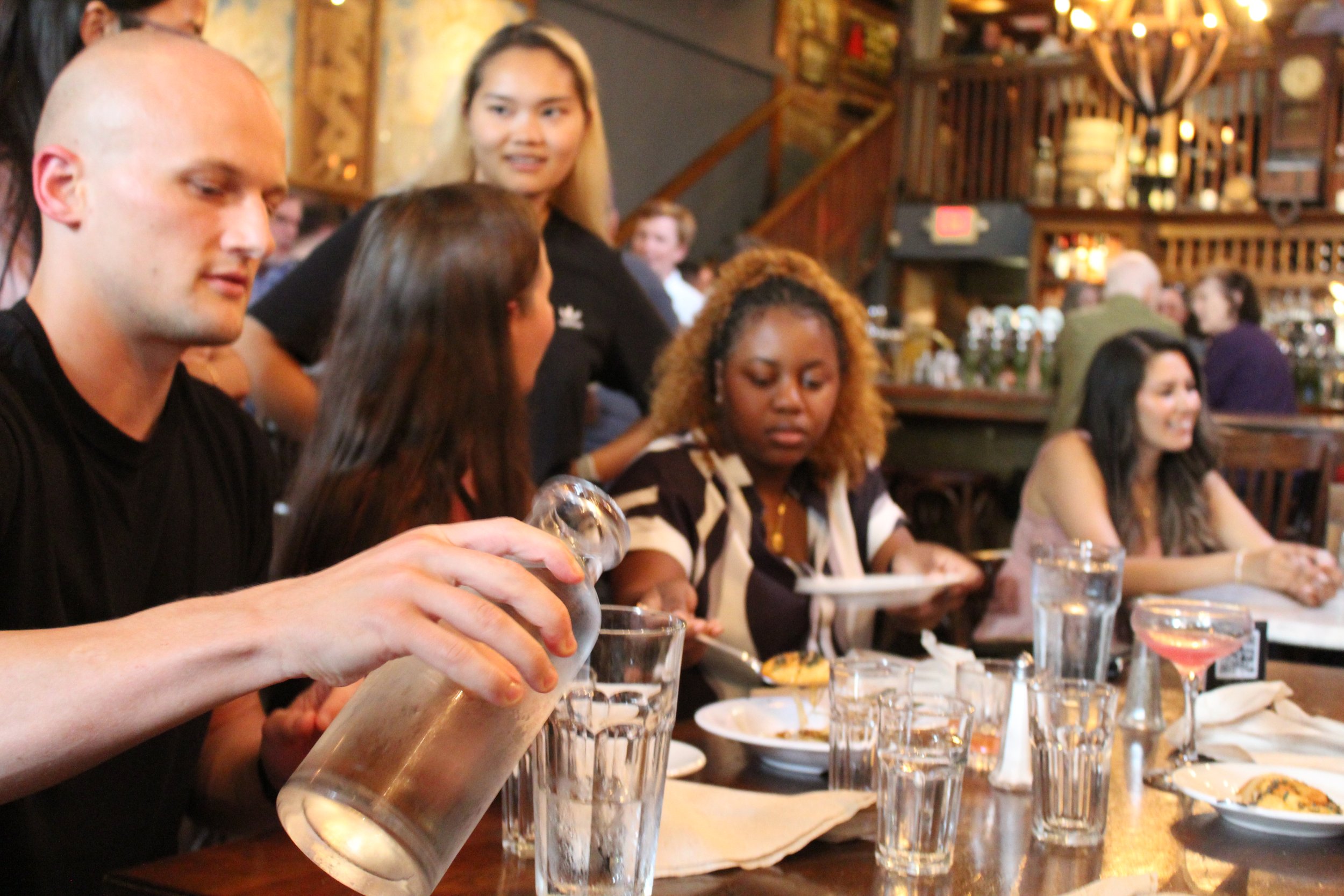In an effort to continuously improve the $2 trillion healthcare industry, Health Technology (HealthTech) is being optimized and utilized across all fields and all systems. The impact of such implemented tools and software is ever-evolving, so we decided to host a Brains In A Bar event to further discuss the matter.
In order to receive a personal invite to the undisclosed location, 250 E Ponce community members first had to solve a puzzle regarding a patient's fluid intake and output during a nurses' shift in a specific scenario.
For lunch your patient drank an 8-ounce glass of orange juice, 240cc of coffee, and a 12 ounce can of Sprite. He also drank half of his 1600mL pitcher of water during your shift. He voided 3 times (350cc, 600cc, 725cc).
Calculate the Intake and the Output in mL (cc) during your shift.
Volume
1 L = 1,000 mL
1 qt = 32 fl. oz. = 2 pts = 4 cups
1 pt = 16 oz = 2 cups
1 cup = 8 oz = 240 mL
30 mL = 1 oz = 2 tbsp = 6 tsp
1 dr = 4 mL = 60 minims= 60 drops (gtts)
15 ml = ½ oz
1 gtt = 1 minim
1 tsp = 5 mL
4 qt = 1 gal = 128 oz = 3,840 mL
1 cc = 1 mL
1 tbsp (tablespoon) = 3 tsp (teaspoon) = 15 mL
Which of the following is correct?
Intake: 1,675 mL; Output: 1,640 mL
*Intake: 1,640 mL; Output: 1,675 mL (correct answer)
Intake: 1,710 mL; Output 1,650 mL
Intake: 1,640 L; Output: 1,675 L
Out of the 32 responses, 28 individuals selected the correct answer and 16 of them participated in the in-depth discussion that was held at Brick Store Pub in downtown Decatur. No strangers to this topic, attendees from Utility, iResearch, and Emory were present that afternoon, ready to engage in some enlightening conversations surrounding the importance and impact of HealthTech.
Over complimentary appetizers and adult beverages, subjects discussed included correlations between tech researchers and healthcare workers, improvements in body-worn cameras, and cross-pollination in different industry verticals.
In general, the consensus was that these HealthTech advancements in devices, medicines, vaccines, procedures, and systems are all significantly helping to solve healthcare problems and improve quality of lives – and that’s something everyone can rally around, regardless of their profession.



